Michel Moore’s tenure: a sharp drop in arrests, and a mixed crime picture
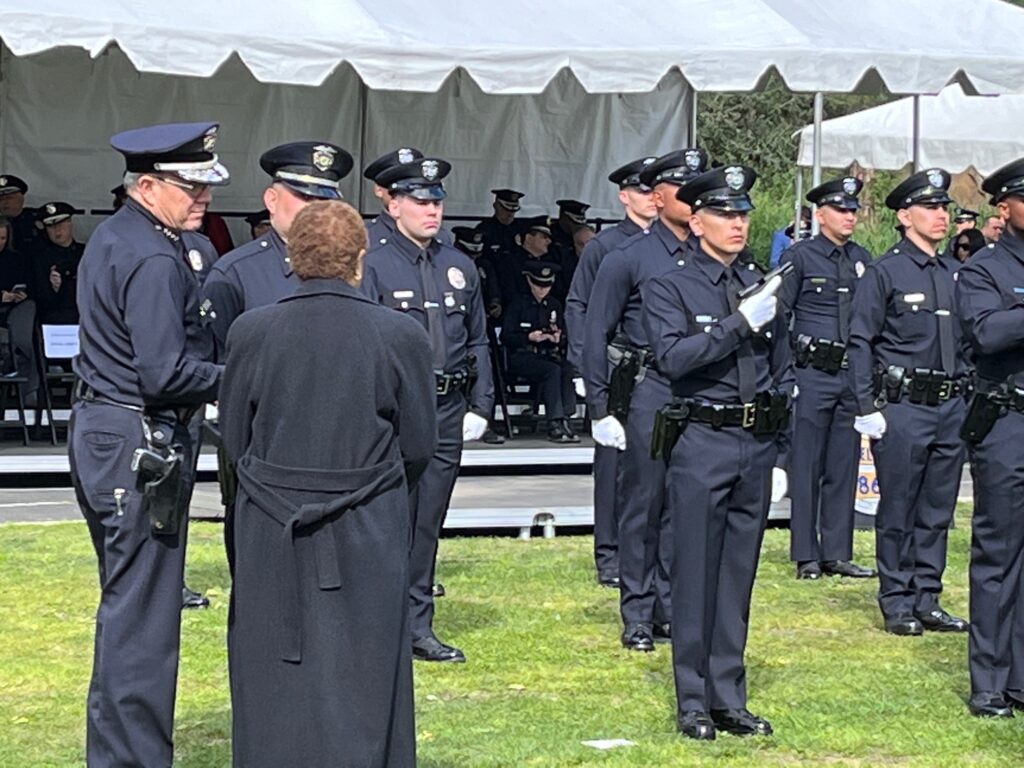
Then-LAPD Chief Michel Moore (left) and Mayor Karen Bass attend the Police Academy graduation in February 2023.
What grade should Michel Moore get after nearly six years as chief of the Los Angeles Police Department?
The 63-year-old stepped down on Feb. 29, closing a more than 40-year run with the force. As always when it comes to law enforcement in the region, there are mixed opinions as to how he fared. Some observers credit him with being a steady hand who guided the department through COVID-19 and a drop in sworn personnel. Detractors say a number of officer shootings and slow progress on reforms point to weak leadership.
That divide extends to the data. Crosstown analyzed publicly available crime and arrests figures from the year before he took the post, and compared them with his final 12 months on the job. Among the results: The number of arrests of Black individuals decreased 43%, outpacing an already dramatic drop in arrests.
[Get crime, housing and other stats about where you live with the Crosstown Neighborhood Newsletter]
Then there were car thefts: In Moore’s final year the city recorded 42.5% more stolen vehicles than before he arrived.
Of course, success as a chief is determined by more than numbers, and myriad factors can shape crime trends. It will ultimately take years to fully assess Moore’s time atop the nation’s second-largest law enforcement agency.
In handcuffs
Moore became chief on June 28, 2018. In the year before his arrival, when Charlie Beck was the top cop, the LAPD made 106,360 arrests.
In the final 12 months of Moore’s tenure—March 1, 2023–Feb. 29, 2024—there were 66,724 arrests in the city. That’s a decrease of 37.3%.
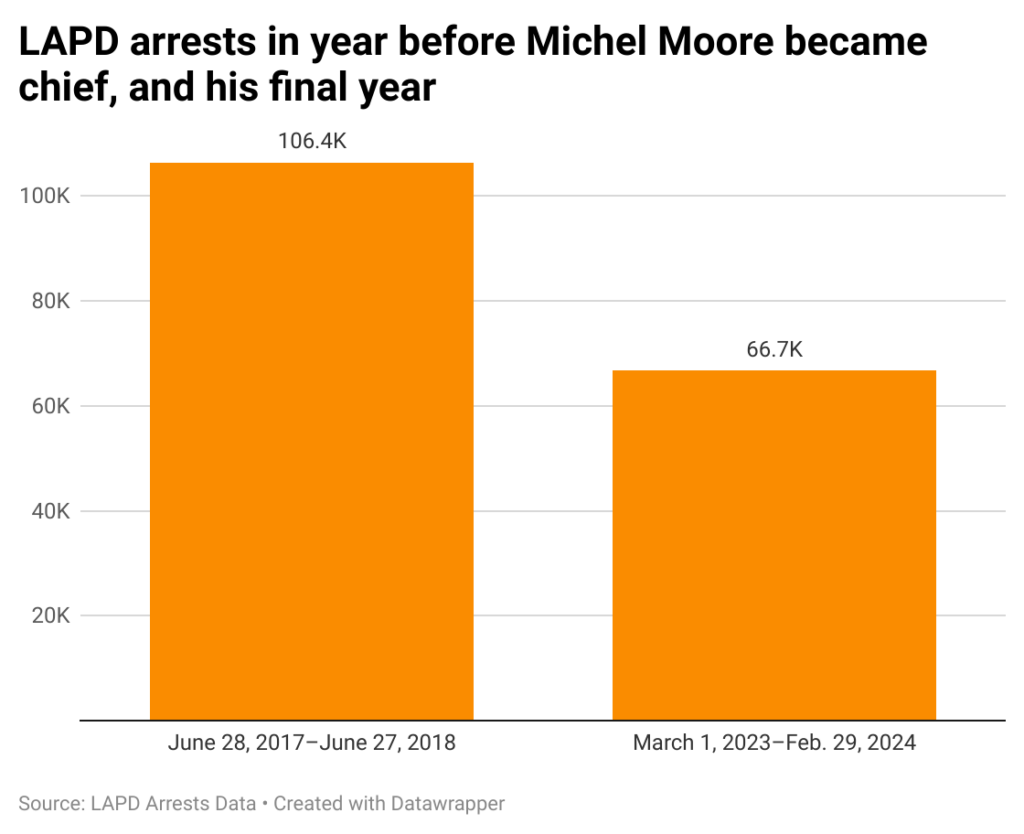
Arrests have actually been falling for more than a decade. In the full year of 2012 there were approximately 163,000 arrests in the city, according to public data. In 2015 the count was about 126,000. The figure dipped below 100,000 in 2019.
Policy shifts that began well before Moore took over, such as an effort to reduce juvenile arrests, played a role in the decline. Crosstown previously reported that some people think Prop 47, which downgraded certain non-violent felonies in California to misdemeanors, also contributed to the downturn.
There were drops in arrests of people of all ethnicities, though disparities remain. In the year before Moore took over, there were 31,055 arrests of Black people in the city. The count in his final year was 17,678.
This means that in Moore’s last year, Black people accounted for 26.5% of those arrested in Los Angeles. Just 8.6% of the city’s population is Black, according to U.S. Census data.
In Moore’s final year, there were 34,238 arrests of people the LAPD identifies as Hispanic—a decline of 29.6%. The number of arrests of white people fell by 46.6%.
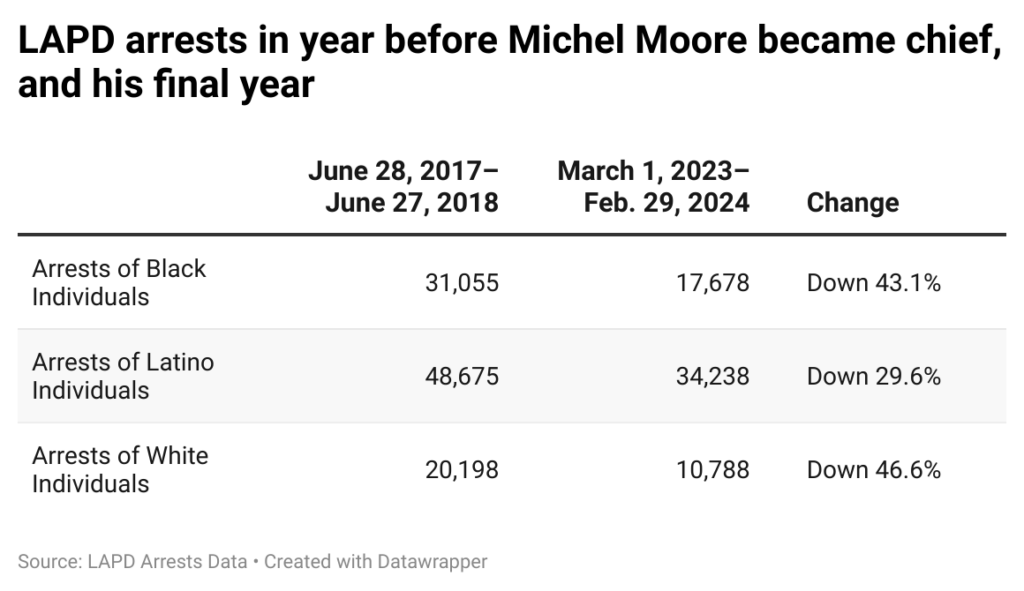
Murders and guns
When it comes to murders, the then-and-now numbers tell just part of the story.
From June 28, 2017–June 27, 2018, there were 269 homicides in Los Angeles. During Moore’s last 12 months there were 336 killings, an increase of 24.9%.
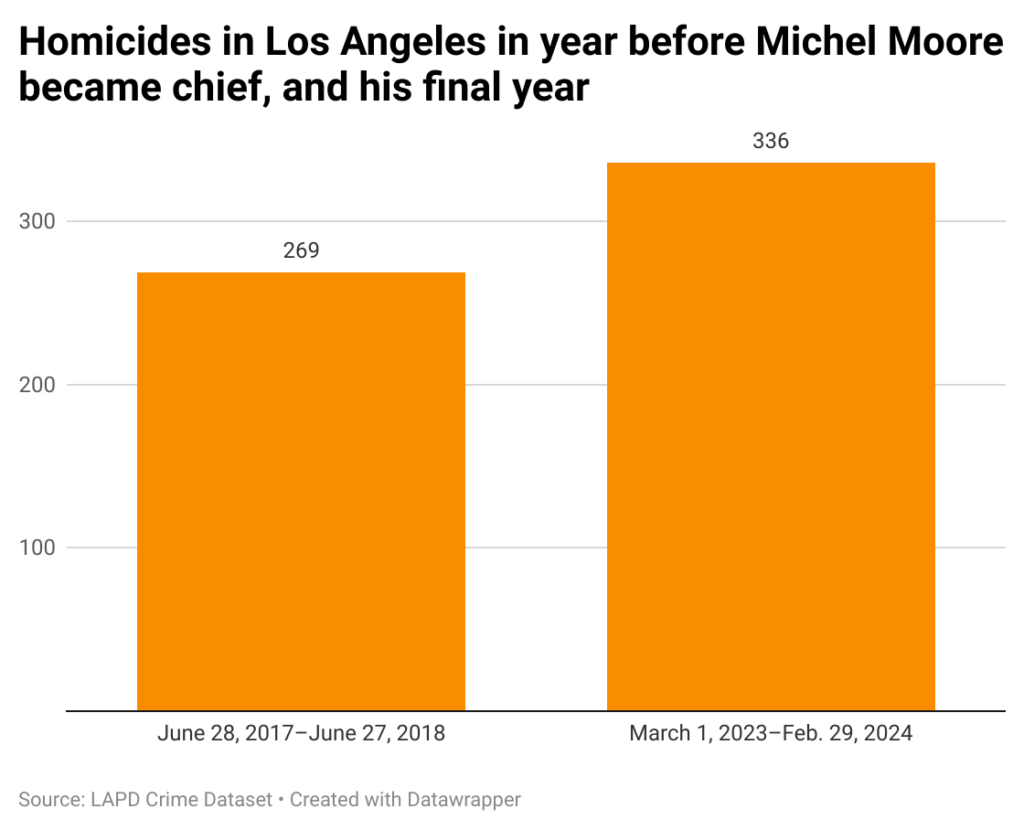
Firearms tend to account for about three-quarters of homicides, and overall gun violence worsened. The 1,233 victims shot in Moore’s last year was up 15.6% over the period before he arrived.
Yet Los Angeles, like many big cities across the country, saw a sharp uptick in homicides and gun violence in the early part of the pandemic, with 402 killings in 2021. Numbers have since fallen, and the 327 murders in 2023 was down 17% from the previous year.
Varying figures
Some changes in key crime categories point to a safer city. Robbery, which is classified as a violent crime, fell by 17.7% in Moore’s final year compared with the period before he took over. Although there have been recent media reports about South American “tourist burglars,” the number of burglaries is down 4.8%.
The two most common car crimes brought wildly different results. The number of vehicle break-ins fell 9.9% from the year before Moore took over to his final year.
Car thefts, meanwhile, shot up 42.5%, to 26,328 reports in Moore’s last year. This, too, mirrored a national spike in stolen vehicles that began early in the pandemic.
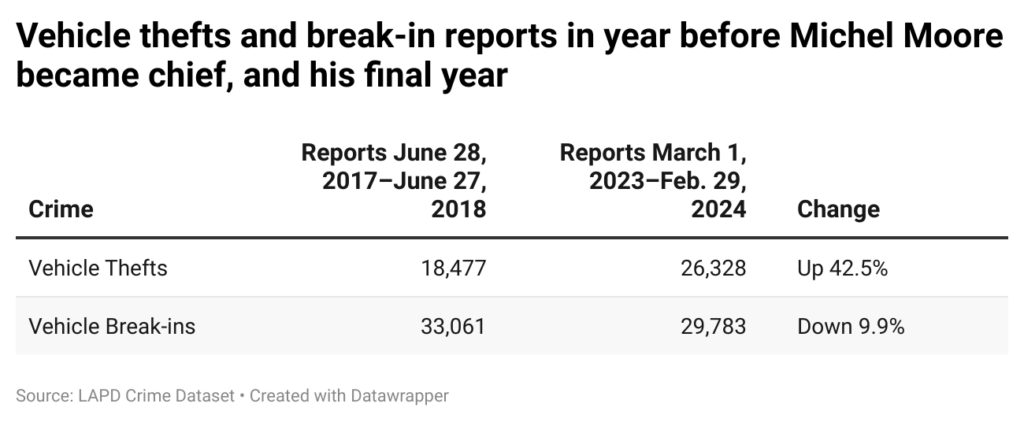
The most dramatic shift involves shoplifting. In the year before Moore took over there were 6,580 reports in the city. In his final 12 months there were 12,333 reports. That represents an 87.4% increase
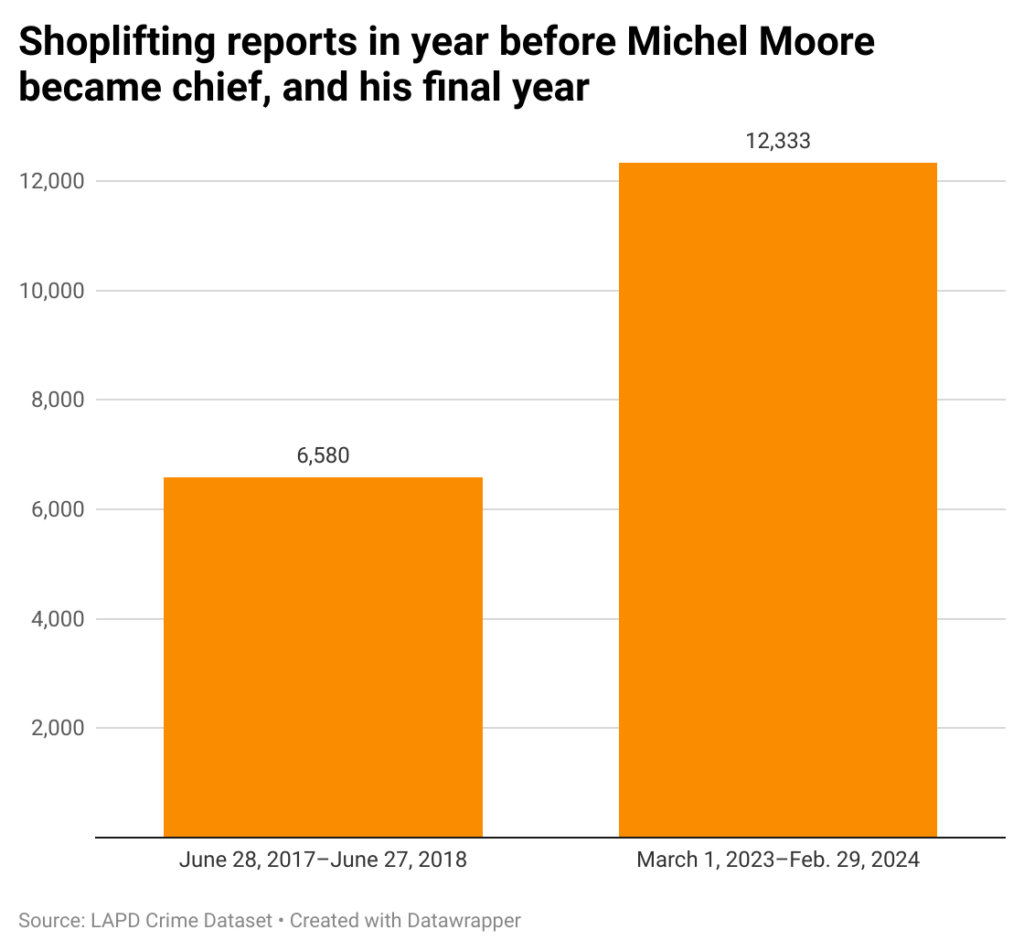
Once again, this was not unique to Los Angeles. Nationwide there have been reports of a surge in shoplifting, though the exact size of the increase is in question.
How we did it: We examined publicly available crime data from the Los Angeles Police Department from Jan. 1, 2010–Feb. 29, 2024. We examined arrest figures in the same period. Learn more about our data here.
LAPD data only reflects crimes that are reported to the department, not how many crimes actually occurred. In making our calculations, we rely on the data the LAPD makes publicly available. LAPD may update past crime reports with new information, or recategorize past reports. Those revised reports do not always automatically become part of the public database.
Have questions about our data or want to know more? Write to us at askus@xtown.la.






